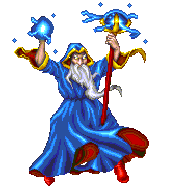Who was
St. Patrick? Where did he come from?
St. Patrick
was not actually Irish by birth, but he born to "Roman Over Lords"
occupying
"previously Scottish Territory".
(Our great
ancestor Niall certainly can not be blamed for that. ...wink ;o)
Naturally
raids were done in an attempt to reclaim
that land
for the people. In one of these raids, young teenage Patrick was spared
but captured
& some Irish folk took pity on him & paid the shipmen for his life.
He was taken
to be a shepherd for an Irish Chieftain & thus to pay back this debt
while enjoying
a better life than on the ship or wherever else he could have been sold
to.
Patrick's
life became mostly one of pastoral simplicity
except for
occasional lonely nights when the hillsides got chilly
& he
missed his parents,
he had few
complaints of his life in this beautiful land.
This according
to his own account.
Patrick admitted
he was well treated as an indentured shepherd
& formed
a love for the Irish.
He later
wrote that he felt guilty because he was tempted
to give up
the religion of his family
to join the
joyful faith of the Irish Folk.
He knew that
if he stayed much longer,
he would
be charmed into their happy ways.
& never
return to the ways of his Roman family.
This inner-
conflict gave him a dream of how he might escape,
& a choice
was to be made. He was at a crossroads,
& Patrick
chose going back to his wealthy birth family.
So before
working off his indentured servitude,
he escaped
leaving this debt & his Irish friends behind.
His escape
was simple enough, jumping onto a ship,
but on his
journey back home
he encountered
hardships he wasn't prepared for but managed to survive.
Upon his return
to his family he was held & hugged by his relieved parents,
then re-indoctrinated
most strictly
into the
Roman Church & made his penance for his "temptation".
to "go native"
& enjoy the Irish ways.
Yet He continually
longed for Ireland
& dreamed
the Irish were calling him back saying,
"Come hither
and walk with us once more."
The only
way he could get back to Ireland,
with the
sanction of Rome, was to go as a missionary.
Thus, He
convinced himself it was for their own good
for the
Irish to join his religion,
since joining
theirs, would mean denouncing his
own family
& Rome.
So he went
back to "save" them after years of study & indoctrination.
Finally Pope
Celestine commissioned him as a bishop
& gave
him his way. Patrick had a unique advantage
knowing the
ways of the Irish people & their beliefs
that other
missionaries might not.
He used this
knowledge to his advantage to try to make himself
seem a more
powerful Druid for his own god,
than those
of the Irish Gods & Goddesses.
He knew when
the Druids would be lighting the sacred fires & so on.

It is said,
Snakes never really made it over to what is now called Ireland
before the
time the Island was cut off from the other land by water.
Nevertheless,
St. Patrick
was credited with driving out all snakes from Ireland
by beating
on his drum with such oppressive clamoring noise
that all
the snakes went into the sea and drowned.
Of course,
this is more symbolic than real,
representing
Saint Patrick's mission of driving paganism "underground".
Snakes were
an important symbol of paganism.
A snake shaped
in a circle was a symbol of the never ending circle of life
through regeneration
& reincarnation.
Water was
a symbol of the spiritual & subconscious mind.
The ocean
a symbol of discovering hidden mysteries.
Paganism &
Seasonal Celebrations
of Mother
Nature & The Greenfolk
which was
never truly eradicated,
simply went
"underground" & became "occult"
until it
could be openly revived without persecution.
The Paganism
of Ireland was a beautiful spirituality
which strengthened
the Irish People from ancient times onward
& remains
forever a glorious part of The Collective Consciousness.
(Became the
hidden mysteries, ever a part of the subconscious mind
& the
true spirits knowledge.)
Also see:
Mt.
Croach Patrick
Since, St.
Patrick was not Irish by birth, but born to Roman Over Lords
occupying
what was previously Scottish Territory,
while
he would hardly have been considered an innocent captive by most,
when taken
to be a shepherd in Ireland, his youth at the time
& the
compassion of the Irish made him so.
St. Patrick
remains a popular saint to many,
because he
is credited with converting Ireland to Roman Catholicism.
March 17th
is thought to be the day of his death.
Thus St.
Patty's Day.
![]()
The
SHamrock
Shamrock
as Triple Deity Symbol :
"The Trinity"
of christian patriarchy was a
direct masculinized
spin-off
of the ancient
Triple-Goddess concept of deity
that was
prevalent throughout most ancient cultures.
While St.
Patrick was later sometimes credited with using
the shamrock's
3 leaves to teach the Irish-Pagans
about the
concept of the (3 in 1) triple "Holy Trinity",
in all fairness
the Irish & Celtic understanding of such a concept
& of
the shamrock
long pre-existed
christianity itself!
Also, historical
fact has it that the christian "Doctrine of Trinity"
was not even
a part
of
christian doctrine, including the Roman Christian Church,
at the time
of St. Patrick's life, much less his sojourn to Ireland.
Saint Patrick
first introduced Christianity to Ireland in A.D. 432
The
doctrine of Trinity (De Trinatate ) was first formulated
& introduced
to christianity by the Gaulish bishop St. Hillary of Pontiers,
in the 500's
& was subsequently used
to utilize
& capitalize on the Celtic triple obsession.
St. Patrick
had already died long before this happened.
So Actually,
The Roman Church borrowed the trinity from the Celts,
(as well
as the symbology of the shamrock ) & not the other way around.
Later, other
judeo-christian sects & religions which adopted the trinity,
but where
not as favorable to the feminine divine as the Celts were known to be.
The shamrock
& Triple Goddesses such as Brighid, long preceded the
christainized
doctrine of trinity, which was simply a masculinization of this.
Although
the judeo-christian version of this pre-existing triple deity concept,
no doubt,
worked well enough as a way
to
explain how a self described monotheistic religion
such as christianity,
could have more than one god,
while at
the same time claiming to have the "one true god"
& so
was thus later adopted by other judeo-christian sects/religions
that were
unfortunately less favorable to the concept of feminine divinity.
The Triple
Goddess Brighid was also changed
to
the mythology of St. Brigit,
because she
could not be eradicated outright.
She was declared
as being a helper to Mary, Mother of God
as Midwife
to Mary upon Christ's Birth.
The Celtic
Church was better able to reconcile feminine divinity
with Christianity
& so much of Ireland is Catholic.
Catholics
also give more honour to Mother Mary
than many
other christian denominations.
St. Patty's
Day
like St.
Valentine's Day,
is celebrated
joyfully, all over the world,
whether in
Catholic & Secular Religions & Cultures.
Unfortunately,
the 12th century Pope gave all of Ireland to England
as a papal
fief !
However the
Irish managed to maintain local control.
So English
control of the Island didn't terribly
happen until
the 17th century,
when Catholic
King James II was defeated by the
protestant,
King William of Orange at
The Battle
of Boyne. (1690)
England &
Ireland became the
“United Kingdom
of Great Britain and Ireland,”
By the Act
of Union (1801),
Causing rapid
chronic decline in the Irish economy
in the
following decades after this.
Though the
population had reached 8.25 million
when the
great potato famine of 1846–48 took many lives.
During these
bleak times,
more than 2 million people were to immigrate to North America
in order
to survive persecution & starvation.
Through back
breaking work,
money they
sent home to their families
helped some
other Irish folk
to stave
off starvation.
A large percentage
of the North American population
is directly
descended from these brave Irish Immigrants.
The Irish
immigrants spread many of their old customs & their fairy lore
throughout
North America.
Samhain became
Halloween, May Day was celebrated in the U.S.A. & Canada
& St.
Patty's Day became a time for Leprechauns to take over the whole U.S.A
& some
parts of Canada.
Back home
in Ireland, Guerrilla warfare against British
forces followed proclamation of a republic by the rebels in 1919.
The Irish
Free State
was established as a dominion on Dec. 6, 1922,
with the
six northern counties (Ulstermen)
remaining as part of the United Kingdom.
The constitution
of 1937 changed the nation's name back to Éire,
(So named
after the ancient Irish Goddess Éire,
re-fullfilling
an old promise of the Gael's of yore.)
The Republic
of Ireland was re-proclaimed on April 18, 1949.
Ireland withdrew
from the Commonwealth,
however
in 1955 Ireland entered the United Nations.
(This is
just a brief summary & no wise
a complete
discourse on a complex subject.)
The Triple
Goddess Brighid.
Poetry, Smithcraft,
Midwifery
Therefore,
christianized legend of her places her as midwife to Mary at Christ's Birth,
thus amalgamating
her function of midwifery into christian mythology.
Similarly,
Lugh is said by some to have been "diminuinized"
to a leprechaun
(wee shoe maker)
because he
did not fit into the christian pantheon very well.
If this is
so, then the irony is, that all the leprechaun lore
has served
to keep his symbolic helpers alive through playful folklore.
When one
searchs for the source of Leprechauns,
one is invariably
led back to the story of Lugh!



When many
think of St. Patty's day the first thing that springs to mind
(besides
a green shamrock, ) is an Irish Leprechaun! ;o)
